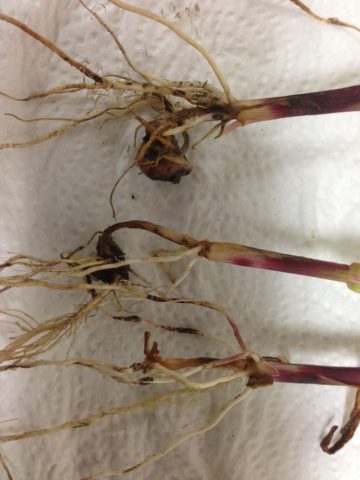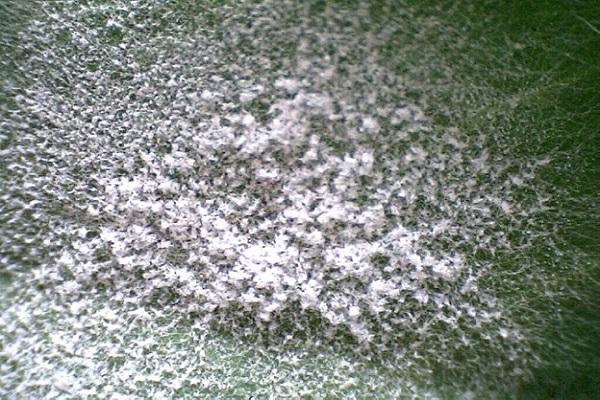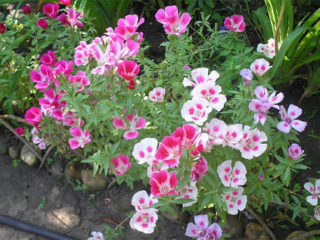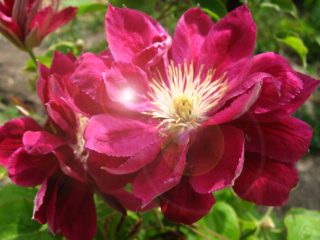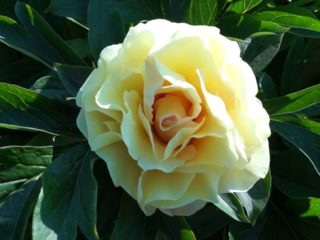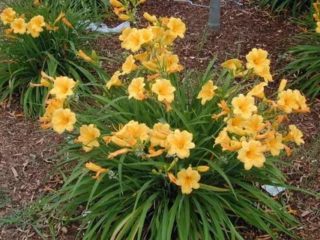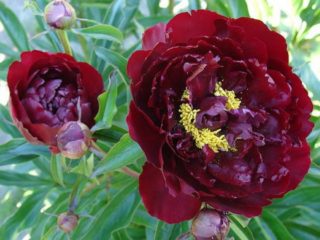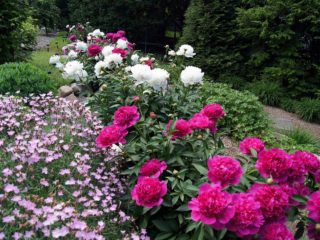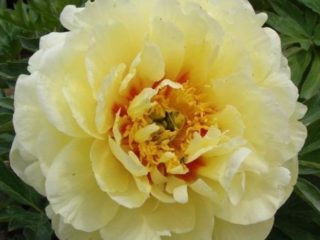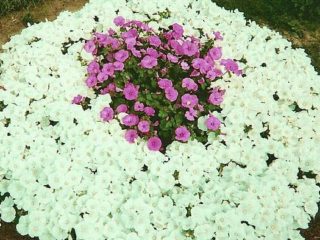Content
Godetia Beauty - “passion flower” or California rose, belongs to the family of Fireweed annuals. In its natural habitat, the plant grows in North and South America. The unpretentious culture received its name after the Swiss botanist-researcher Godet, who first classified godetia. A favorite of many flower growers, the culture is considered a distant relative of the European Ivan tea.
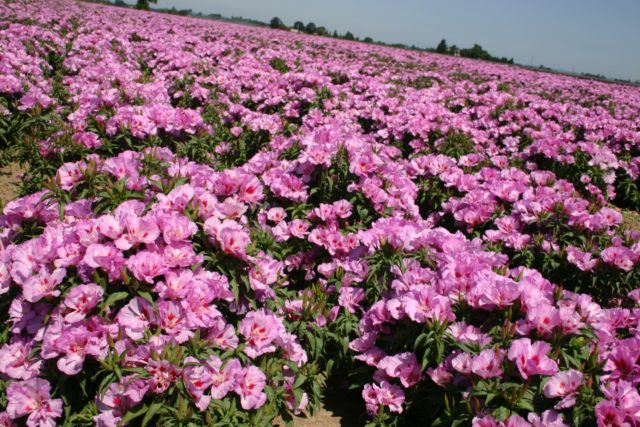
In appearance, the satin inflorescences of Godetia Beauty are similar to azalea or clarkia
Description of terry Godetia Beauty
In the flowerbed, terry Godetia Beauty “lights up” the surrounding space with the play of bright reflections of scarlet and salmon, red-pink and red-cream silky petals under the rays of the sun. The plant is characterized by resistance to low temperatures, abundant and long-lasting flowering, and a unique appearance:
- bush height - 30-45 cm;
- branched, erect stems;
- lanceolate leaves;
- inflorescences are leafy, racemose;
- cup-shaped flowers;
- diameter of flowers - 4-5 cm;
- the color of the inflorescences is varied: bright red, scarlet, salmon, pink, red-pink, red-cream;
- type of inflorescences - double;
- the fruit is a tetrahedral, cylindrical capsule with small seeds.
The ornamental culture Krasavitsa is characterized by a subtle aroma of vanilla.
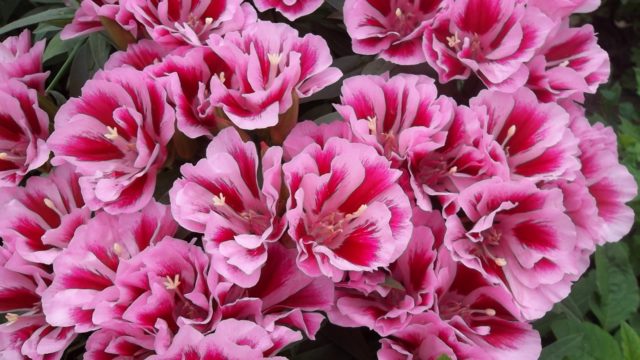
The terry Godetia variety Krasavitsa is distinguished by long-term flowering, which continues until the first frost.
Application in landscape design
With great success, Godetia terry variety Krasavitsa is used for landscaping areas and effectively designing complex flower beds, mixborders, and flower beds of the same type. Due to its low growth, the plant is widely used for edging borders that form the end of paths or lawns. Spectacular scarlet and variegated inflorescences look on the slopes of alpine hills, in ridges, flowerpots, containers, and hanging flowerpots. The culture is quite hardy and unpretentious, therefore it is often used to design various landscape areas:
- in prefabricated flower beds with Godetia Beauty, white, blue, lilac, pink shades of asters, irises, and petunias are wonderfully combined;
- in the original discounts Godetia Beauty is “friends” with other varieties of godetia and clarkia;
- in mixborders, the Beauty plant goes well with ageratum, peonies, and marigolds.
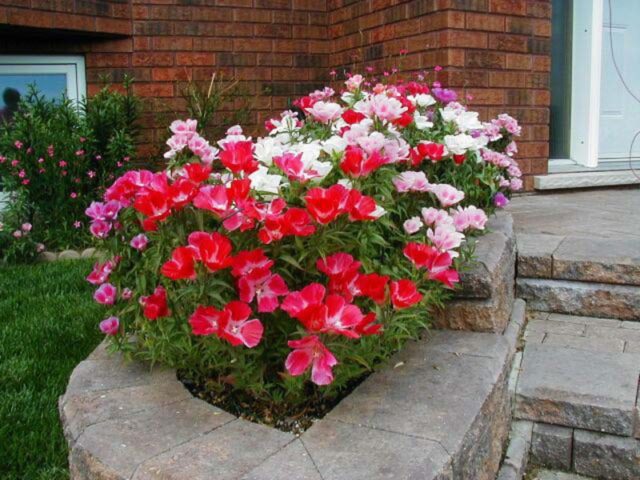
A beautiful and unpretentious ornamental plant can be grown on the balcony or loggia of a city apartment.
Features of reproduction
Godetia terry variety Beauty is propagated by seeds. The crop can be grown in two main ways:
- sowing seeds for seedlings at the end of March;
- sowing seeds in open ground in mid-April or autumn (for warm regions).
When sowing in open ground (without growing seedlings), the seeds are treated with a weak solution of potassium permanganate for 30 minutes. Well-lit areas with neutral loamy or slightly acidic soil are suitable for growing the crop.
Before sowing, the soil is carefully dug up, lumps are broken up, and fertilized with wood ash, mineral compounds, and humus. Godetia Beauty seeds are sown in the ground to a depth of 0.5 cm, at a distance of up to 25 cm.
Crops are covered with film to accelerate seed germination in their natural environment. When 2-3 leaves appear, the seedlings are thinned out. Some gardeners note the advantages of sowing Godetia seeds in open ground, since the percentage of death of sprouts when transplanting seedlings into the ground is reduced.
In areas with a warm climate, seeds are sown in the fall, before winter. Flower growers note that such plants have more stable immunity and resistance to sudden temperature changes.
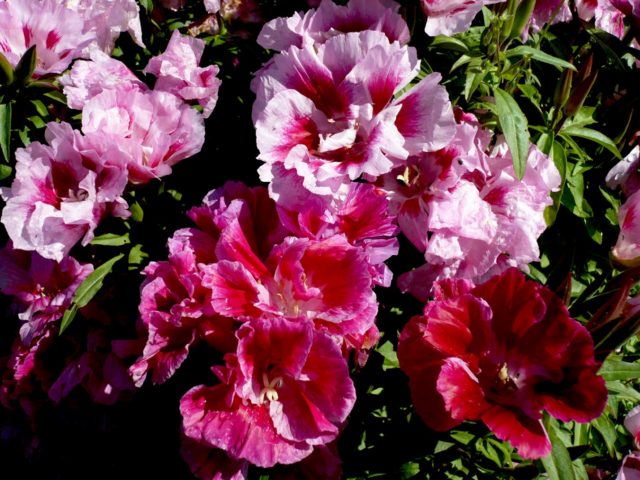
In places with a fairly warm climate, seeds of the Krasavitsa variety can be sown in open ground before winter
Growing Godetia Beauty from seeds
Growing crops from seeds at home is done using seedlings. The unpretentious godetia has rapid germination.
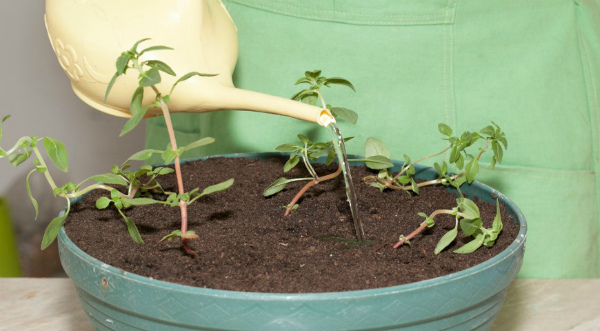
To grow seedlings, it is necessary to comply with sowing dates and basic care rules.
Time for sowing seedlings
Seedlings are sown in late March or early April. When several permanent leaves appear and consistently warm weather sets in, the young bushes of the plant are planted in the soil.
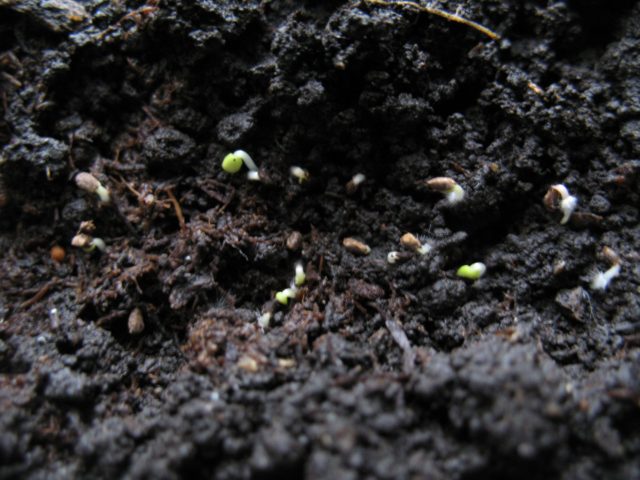
Flowering of the crop occurs 1.5-2 months after the appearance of the first shoots
Container and soil for seedlings
Plastic or wooden containers of small height are chosen as containers. The container is pre-disinfected. A drainage layer is placed at the bottom of the box and filled with loose, sifted soil mixture fertilized with complex preparations.
The composition for godetia is prepared from garden soil, sand, peat, which is pre-disinfected.
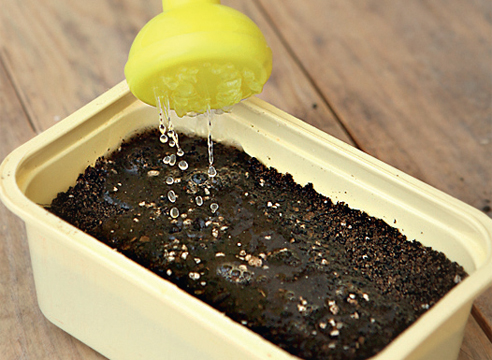
Before sowing, the substrate is thoroughly moistened
Sowing seedlings
Small godetia seeds do not require special preparation. To disinfect seed material, seeds can be treated for several minutes with a weak solution of potassium permanganate.
Since the seeds are tiny, you should mix the seed and sifted river sand. The mixture of sand and seeds is evenly distributed over the surface of the soil and sprinkled with a thin layer of earth.
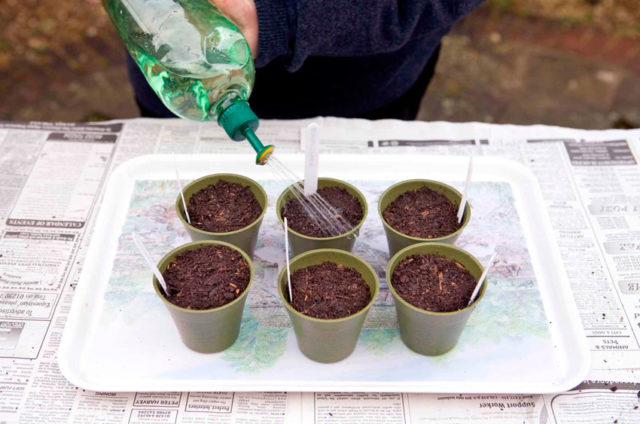
The seeds of the plant are hardy and remain viable for 3-4 years.
Seedling care
Well-lit and warm places are suitable for containers with seedlings, without direct exposure to cold air and drafts. The container is covered with plastic film or glass to create a greenhouse effect. Every day the container with the crops is ventilated and the film is opened for several hours.
The crop requires the most gentle watering from a spray bottle to evenly distribute the liquid. This will protect the seeds from being washed into the deeper layers of the soil. Warm water is used to water crops, which additionally stimulates germination. Godetia “prefers” moderate watering.
After 10-12 days, the first shoots appear. After the sprouts appear, the shelter is removed. Plants are picked when 2-3 true leaves appear. The intertwined shoots are separated using a spatula.Roots larger than 3 cm are cut to stimulate the development of strong and healthy lateral roots.
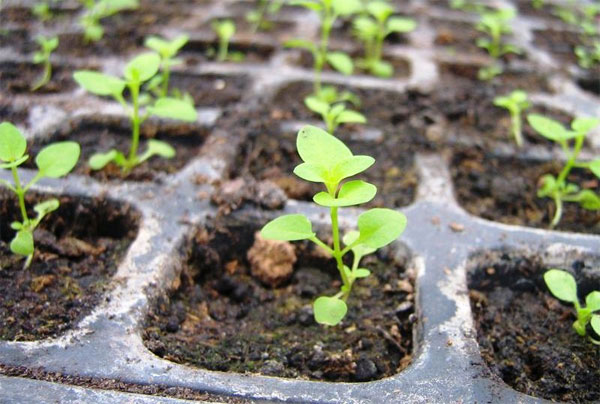
The sprouts are carefully removed and transplanted into separate pots or containers measuring 9x9 cm, 2-3 seedlings each
Planting and care in open ground
Before planting the plants in open ground, the sprouts are hardened off and gradually taken outside. The time spent outdoors is increased from 1-2 to 24 hours. To plant mature seedlings in open ground, you should follow some simple rules.
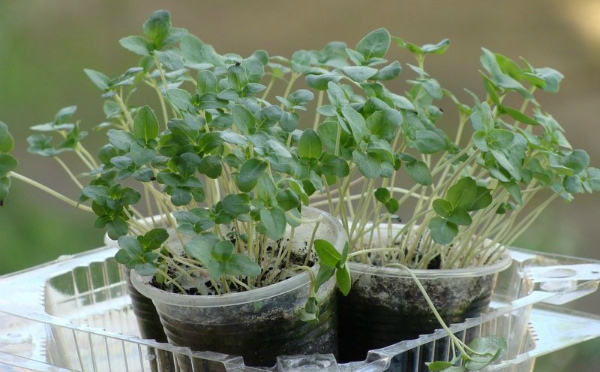
To replant ornamental crops, you must choose the evening or early morning hours
Deadlines
The Krasavitsa variety is planted in open ground at the end of May or at the beginning of June when the plant reaches a height of 5-7 cm. The bushes are moved together with a lump of earth from an individual container. In order not to injure the plants, it is best to choose a cloudy day for replanting, early in the morning or after sunset.
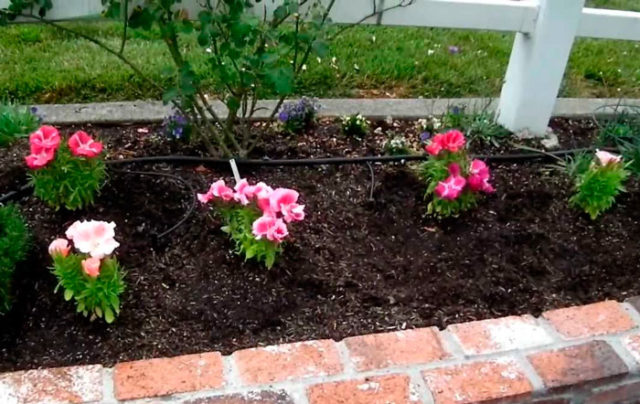
Godetia of the Krasavitsa variety should be planted in open ground when stable warm weather sets in.
Site selection and soil preparation
For the culture of Godetia Beauty, sunny areas of the garden are suitable, without shading by trees and buildings. Plants “prefer” loamy, well-moistened, loose, breathable soils.
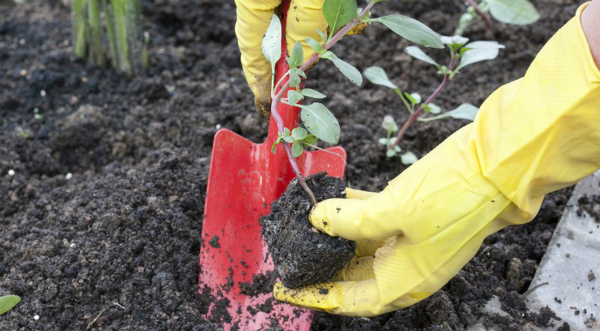
Godetia Beauty bushes should be planted away from places where weeds grow.
Landing algorithm
When planting seedlings in open ground, you should maintain a distance of up to 25 cm between individual specimens. The plants are carefully removed from the seedling container and, together with a lump of earth, are moved into a small hole. Sometimes white clay is added to the holes. The bush of the Krasavitsa variety is carefully pressed to the ground, if necessary, sprinkled with soil and moistened abundantly.
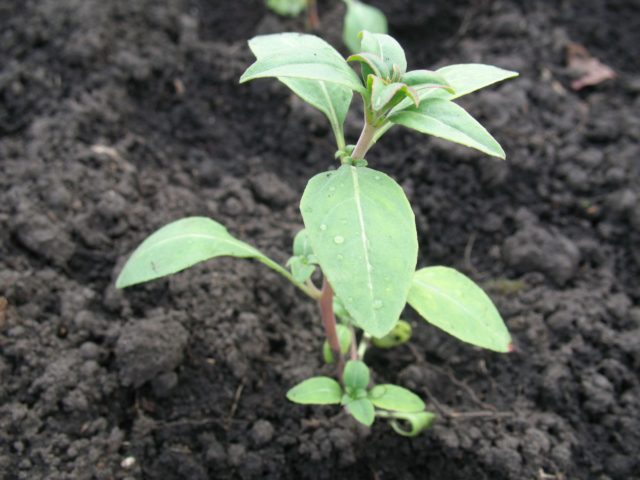
Godetia Beauty cannot be planted in open ground in bloom.
Watering and fertilizing schedule
Plants require systematic fertilization (once a month) to stimulate abundant flowering. Mineral, nitrogen-containing fertilizers are used for fertilizing.
Before the flowers appear during the formation of buds, the bushes can be fertilized with complex preparations with a high content of phosphorus and potassium.
Flower growers note that the most preferable solution for Godetia variety Beauty is a solution of nitrophosphate (prepared at the rate of 1 tablespoon per 10 liters of water).
In addition, vigorous flowering can be stimulated by applying organic natural fertilizers (bird droppings, mullein) under each bush.
Excess nitrogen in complex preparations can lead to excessive growth of godetia foliage and inhibition of flowering.
Godetia variety Beauty requires constant watering, since drying out of the soil can cause plant death. Drip, regular but moderate watering is suitable for this ornamental crop.
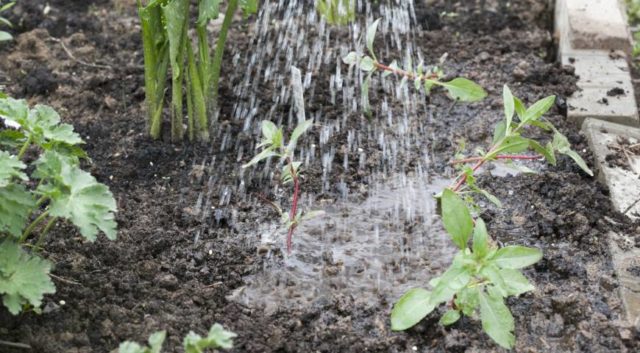
The correct balance of watering should be maintained: do not overdry or over-moisten the soil around Godetia Krasavitsa
Loosening, weeding, mulching
During the period of growth and development, Beauty plants require comprehensive care:
- periodic loosening;
- weed removal;
- mulching.
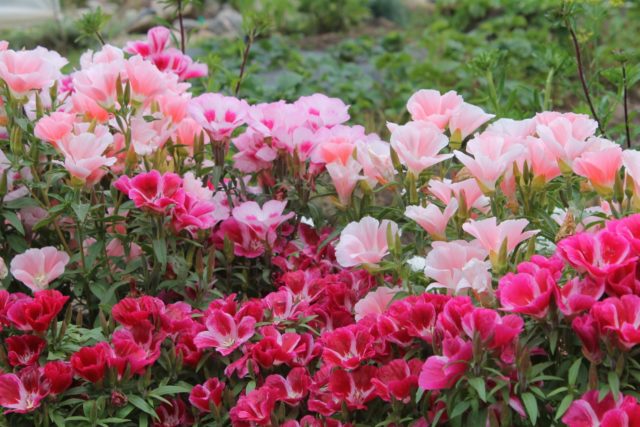
When favorable conditions are created for the growth and development of godetia, the plant will “respond” with more lush, long-lasting flowering
Installation of supports
Since the height of the Godetia bush of the Beauty variety reaches 45 cm, the plant requires support. They can be used as wooden, metal or plastic rods or pegs.Supports are necessary, since fragile stems can break off under the weight of numerous inflorescences.
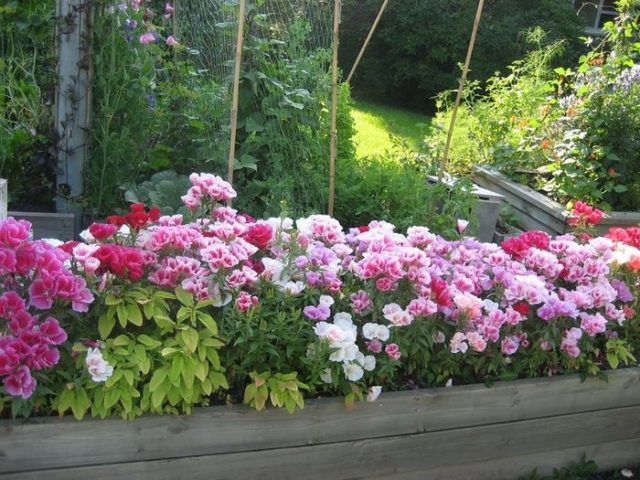
The fragile stems of Godetia Beauty can break off under the weight of abundantly flowering clusters
Care during the flowering period
The flowering of the ornamental crop lasts about 1 month. Afterwards, seed boxes are formed in place of the inflorescences. The darkened boxes are carefully cut off, dried, opened and the seeds are removed. They are stored until sowing in paper bags. The material has excellent germination for 4 years.
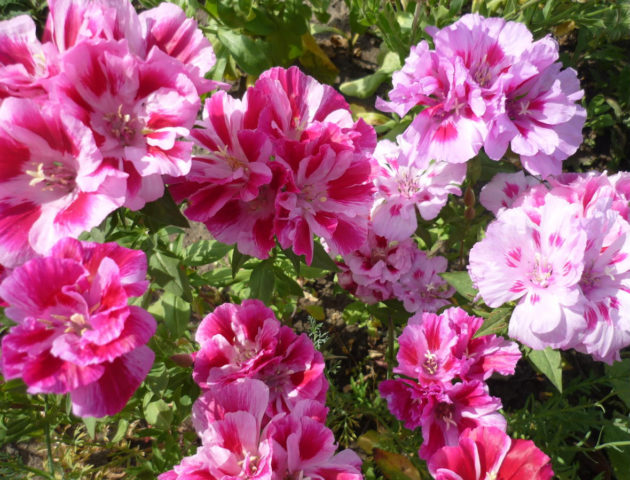
If there is no need to collect seeds, dry inflorescences and leaves are removed
Diseases and pests
Among the most common diseases among representatives of the world of flora, Godetia variety Beauty is subject to infection by root rot and powdery mildew:
- Root rot affects flowering godetia bushes during periods of prolonged rain. The disease is manifested by wilting of flowers and the appearance of brown spots on leaf blades. Affected plants should be removed immediately to prevent infection of healthy bushes.
After burning a plant affected by root rot, the soil should be disinfected and working tools should be disinfected
- Downy mildew, or powdery mildew, is characterized by the appearance of a white coating on the leaves. The plant gradually withers and loses vitality. Fungicides are used to combat the disease.
Affected bushes are sprayed with special fungicide solutions
Aphids pose a particular danger to Godetia Beauty. The insect draws juices from stems and buds. As a result, the plant fades and “sheds” its color. In order to prevent the proliferation of aphids, it is necessary to weed the weeds in a timely manner and do not place godetia near melons and melons.
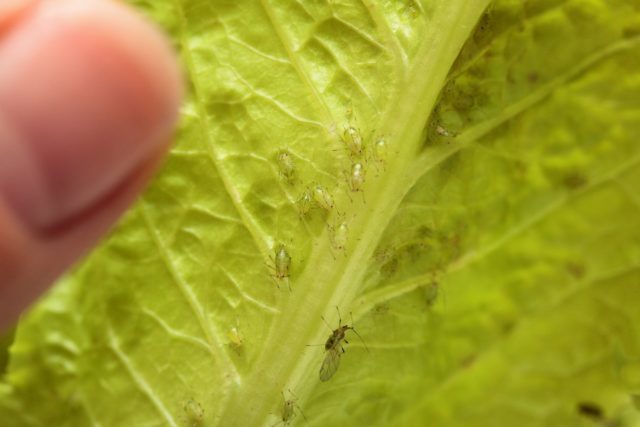
Universal insecticides are used to control aphids.
Conclusion
Godetia Beauty is an amazing, lushly flowering plant that can delight with long-lasting flowering of satin inflorescences all summer and autumn, until the onset of the first frost. Knowing the basic techniques and rules for propagating and growing crops, you can design magnificent, bright and stylish flower beds and flower beds, as well as decorate your home area with flowerpots or hanging pots with bright scarlet spots of delightful double flowers.
